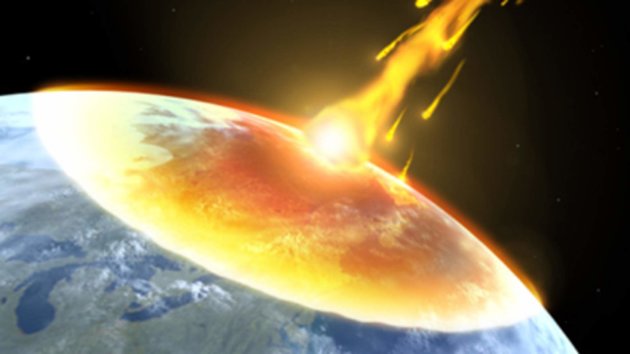That’s still better than the four minutes we’re offered if nuclear missiles are flying through space - and European authorities who conducted the simulation believe it offers enough time to save lives.
"Within about three days before a predicted impact, we’d likely have relatively good estimates of the mass, size, composition and impact location," says Gerhard Drolshagen of ESA’s NEO team.
The simulation imagined a non-existent (but plausible) asteroid ranging in size from 60 to 120 feet in diameter – spanning roughly the range between the 2013 Chelyabinsk airburst and the 1908 Tunguska event – and travelling at eight miles per second.

Effects of the asteroid would be similar to that of a hydrogen bomb
The Tunguska event, in 1908, was the largest impact event in recorded history, destroying 80 million trees over an area of 800 square miles in the Siberian forest.
During the 2013 Chelyabinsk event, for instance, the asteroid, with a mass of about 12 000 tons and a size of 60 feet, hit the upper atmosphere at a shallow angle and a speed of about 12 miles per second, exploding with the energy of 480 kilotons of TNT at an altitude of 16 to 18 miles.
While potentially a real hazard, no injuries due to falling fragments were reported. Instead, more than 1500 people were injured and 7300 buildings damaged by the intense overpressure generated by the shockwave at Earth’s surface.
Many people were injured by shards of flying glass as they peered out of windows to see what was happening.
"In such a case, an appropriate warning by civil authorities would include simply telling people to stay away from windows, and remain within the strongest portions of a building, such as the cellar, similar to standard practice during tornados in the USA," says Drolshagen.
It was the European Space Agency’s first asteroid-impact simulation.
"There are a large number of variables to consider in predicting the effects and damage from any asteroid impact, making simulations such as these very complex," says Detlef Koschny, head of NEO activities in the SSA office.
"These include the size, mass, speed, composition and impact angle. Nonetheless, this shouldn’t stop Europe from developing a comprehensive set of measures that could be taken by national civil authorities, which can be general enough to accommodate a range of possible effects.
"The first step is to study near-Earth asteroids and their impact effects."
We are fortunate to have scientists who are studying the possibility of an asteroid strike. It is not something the average person spends much time dwelling upon; but it does happen every once in a while, here on earth. And it would undoubtedly be catastrophic. It could cause earthquakes, tsunamis, climate changes and even knock the earth off it's axis. Give that a little thought and you won't be so worried about cyber terrorism. Sleep well.

No comments:
Post a Comment
Through this ever open gate
None come too early
None too late
Thanks for dropping in ... the PICs